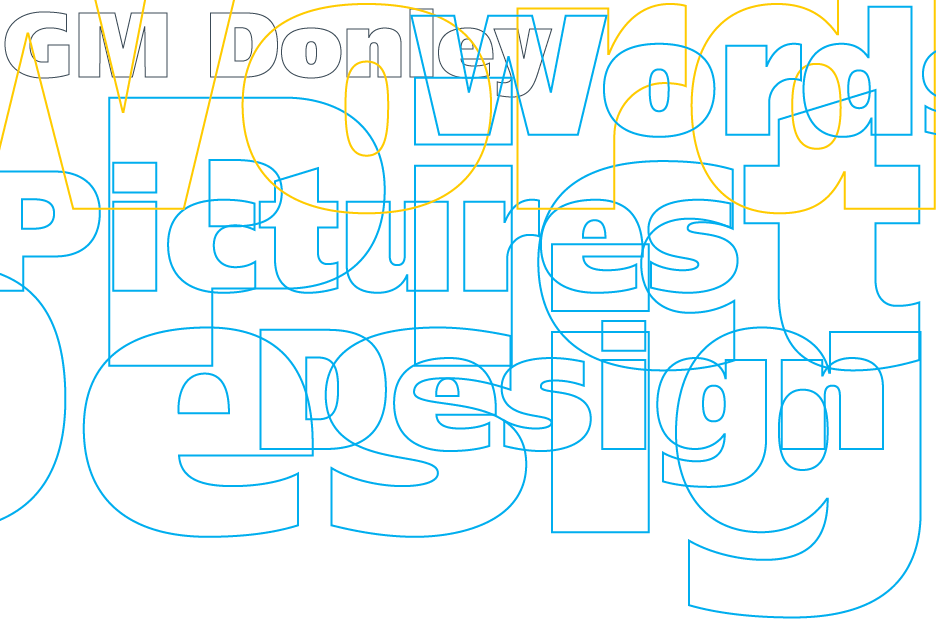

By G. M. Donley
Committees Commit, Designers Design
Believe it or not, the wisdom of the crowd and the hand of the designer can make a pretty good team.
It only takes three little words to make most designers cringe: "Design by committee." The very predictability of that response begs a couple of questions: How do committees so often end up taking over design projects, and is it possible to help them overcome their perverse desire to seize control of the bus and swerve it into the ditch?
Take a look at the prototypical design-by-committee committee. Surprise— its members are not idiots, nor evildoers, not even distracted administrators, but well intentioned, competent people who are legitimately trying to help. They are commonly known as “stakeholders,” the people who have a strong interest in a positive outcome—people who do not, one would think, have a whole lot of incentive to try to wreck everything.
So, what goes wrong? Usually, the scenario has its genesis in an admirable desire to follow a democratic process that allows everyone to have input. The realm of urban planning and design offers many lessons in this area because it, perhaps more than any other design discipline, constantly struggles with the imperative to solicit input about a broad diversity of human wants and needs while sustaining a coherent spatial and aesthetic environment.
Unfortunately, these two objectives often seem to find themselves in opposition. That is, the two most common design failures in the world of architecture and urban design are: 1) draconian schemes imposed on a community with insufficient regard to the wants and needs of its people, or 2) design-by-committee projects that end up as little more than incoherent expressions of the diversity of stakeholder opinions. One fails because of inadequate attention to the users, and the other fails because of inadequate attention to form, structure and aesthetics. Nobody likes either outcome.
What most people do like is something that both addresses diverse user needs and is designed by a good designer. To reach that place it may be helpful to re-frame the endeavor so it is no longer about who has decision-making authority, but rather about crafting a design-positive process and giving the process itself authority. The goal is not that any constituency wins, but that design itself wins. A victory for design is a victory for everyone.
Practically speaking, a successful collaborative design process has two phases: articulation, in which the needs and wants of all the stakeholders are teased out and common goals agreed upon; and design, in which the designer responds creatively to those goals. This will sound familiar to anyone who has engaged in a long-range planning exercise or participated in a community-driven urban design charrette. First, articulate what you collectively want; then, design a system to make it happen.
It's important at the outset to describe these two distinct, inalterably sequential phases: first articulate, then design. Problems may still arise. Sometimes a stakeholder looks on a later design review as an opportunity to revisit some pet issue, even though it had already been worked out. Or someone may purposefully stand outside the process and plan to swoop in later so they don’t have to endure all that annoying democratic discussion. But if the collaborative articulation process carries sufficient authority, such attempts to trump the game will be ineffectual and those stakeholders will learn to participate more constructively. A fringe benefit is that the participants across the board tend to feel a much stronger sense of ownership.
Thus the much-maligned “committee” can be a great asset if its collective intelligence is channeled into clear articulation of goals. Sometimes that process brings disagreements to the surface, which can be uncomfortable—but less uncomfortable than having people air their complaints after it’s too late to do anything. And sometimes the quest for consensus falls short and you have to settle for mere understanding.
But if key articulation decisions are not made or are left vague, or if stakeholders feel free to re-open matters of articulation after the design is well underway, you can probably look forward to many, many iterations trying to get to a successful outcome, if you get there at all.
So why involve all these characters at all? To many people, design shouldn’t involve such diverse input in the first place. Just let the designer work directly with the principal decision-maker and go to it, right? Fair enough, but in a mission-driven organization, the needs and desires of diverse constituencies are direct circuits to important currents of the institutional mission. For instance, in the art museum that employs me, the audiences are numerous and overlapping, and the people with a stake in any given project could include educators, students, visitors, artists, curators, donors, marketers, designers, trustees, project advisors, the museum director and an anonymous person in Spain who owns a work of art in the current exhibition. Any of these people may have legitimate things to say in forming, say, a suite of design pieces developed around a special exhibition.
It’s enticingly simple to just hire an agency and make all the decisions on a clear-cut customer-client basis, but foregoing the opportunity for richer connection and relevance to the institutional mission is kind of like ordering a burger and fries from the drive-thru when you could be at home cooking up a real meal using fresh local ingredients.
That’s why it can make sense to look at designing in a complex mission-driven organization as akin to designing a public space: You want to wind up with an enduring, attractive design that works for a diversity of potential users. To get to that end, designers should never exclude that range of opinion—but neither should they abdicate the designer’s responsibility to do the actual designing.
Gregory M. Donley is assistant director for creative services at the Cleveland Museum of Art
Contact: info@gmdonley.com